It all started in the year 2007
Mucho + Mayo' 08 [ Young Talents Festival ]
Fléchés Sans Corps
In November 2007 Juan was approached by the coordinator of the festival, Patricio Hernandez, who wanted to invite him to be part of the festival in 2008. As the Festival is focused on young audiences and coordinated by young people, Juan told him that he would like to propose a project which would look at those “other” youth, who remain invisible to them; young men who left their country in search for a better life.
In 1989, when Juan was living in Valencia, he met a young black guy who asked him in English for an address; He didn’t know the place but they started talking about the city and so. Frank told Juan that he had left his country, Nigeria and come to Spain as was they called “illegal” immigrant. They became friends and Frank would explained later how he was forced to leave his family farm after his family was persecuted by police. And how this happened, Because his father had complained against Shell an oil and gas company which had destroyed his land. That year, Frank’s dad was murdered and he, his mother and brother had to leave for Senegal, where they would remain until Frank decided to travel to Spain.
Like Frank, many other young men have been forced to leave their homeland and found themselves in a journey which for many of them will finish drowning in the sea. Since 1989, thousand of them have died or disappeared. We will never be able to recover their bodies…perhaps their families will never know their husband, brother, son…is not longer alive.
DAY 01
08:00 am
We have arranged to meet at the front side of the Museum of Subaquatic Archaeology with the engineer from the Harbour Authority who will help with the sea containers – When I arrived at the site, Rosa was already there chatting with the guy who operates the crane – eventually the trucks appeared from behind the building…
It was very bright already and we started preparing everything for the setting up – Angel will directed the crane’s staff to gently locate the first sea container – He asked me where the longest container would go and I said that the door should face West. The idea was to set two sea containers facing each other; one was of 12 meters long and the other 6 meters.
11:30 am
The technicians from the council came to start installing power inside the sea containers. We worked out the best way to install power without leaving the wires too visible. Eventually we decided to bury them under the sand.
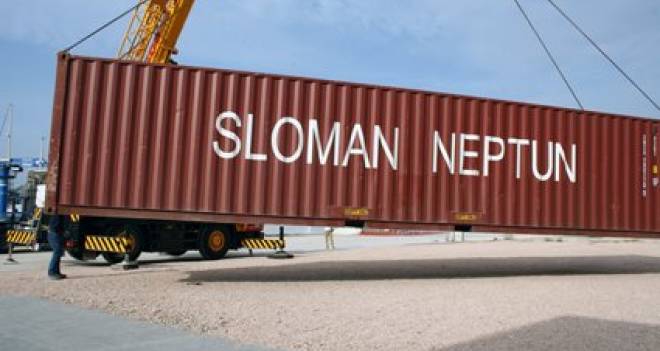
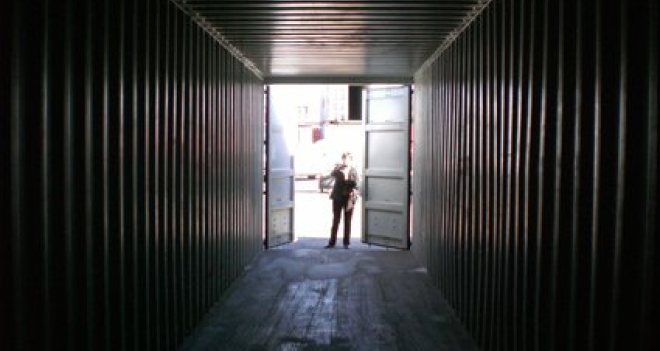
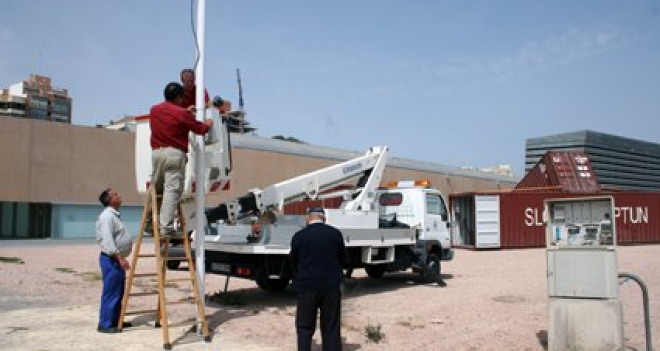
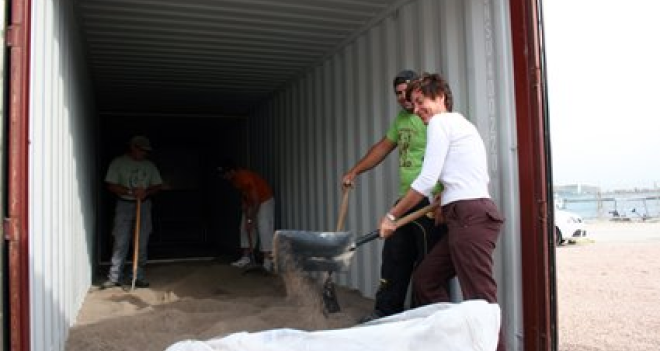
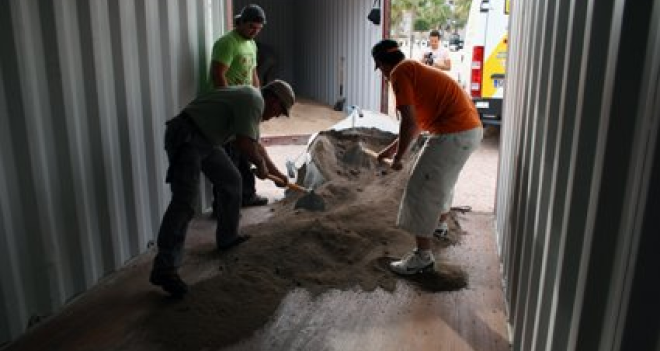


DAY 02
09:00 am
Jaime and Karel arrived from Alicante to start setting up the structure that will support the projector and the reflecting screen; they also will set up the rear projection screen around 4 meters away from the projector. Meanwhile, big sand sacs were delivered to the sea containers and everyone started spreading the sand on the container floor.
04:00 pm
Juan started to carefully set up the shoes whereas Jaime was installing the light at the small sea container; the light was halfway powered so that it looked as it was gradually fading away… It was important to create an atmosphere of graveness to encourage the audience to perceive the work as almost meditative towards the subject.







Premiere Mucho Mas Mayo Festival, Cartagena (Spain)
Arrows Without Bodies was exhibited in Cartagena, Spain as part of the Festival Mucho Mas Mayo. For this festival, Juan chose to work in the harbour and use ship containers as a metaphor for the ideas of human migrations as well as labor exploitation and social displacement.
I KNOW A PLACE WHERE WE CAN GO
In October 2013, Juan was invited to take on a group show curated by Firat ARAPOĞLU at the Bergsen Galleri, an exhibition space recently opened in Istanbul; One of the ideas Juan wanted to explore what the sense of belonging and home that many of the artists chosen were examining in their works in one way another.
Sense of belonging is generally defined as the experience of personal involvement in a system or environment so that persons feel themselves to be an integral part of that system or environment. The exhibition propose that sense of belonging occurs in relation to various external referents. These referents include not only other persons and groups but also objects or environments.
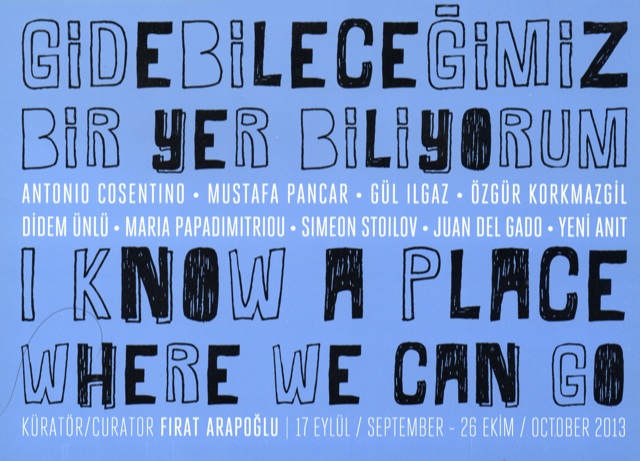


The writer Wallace Stegner states in his book “The Angle of Repose” that “Home is a notion that only nations of the homeless fully appreciate and only the uprooted comprehend”. And this is one of the ideas behind the work Arrows without Bodies; in the present world, an increasingly number of people are experiencing the tragic effects of displacement after having being forced to leave their homes due to the devastating reality of war and poverty.
In many parts of the world, a colossal amount of people have lost their possessions, their farms, houses, jobs… many of them must have been exposed to an extreme level of horrors, perhaps even having their beloved perished, kidnaped, raped… yet, most of the persons have not been able to come to terms with the tremendous effect all this has had upon them.

Gallery






